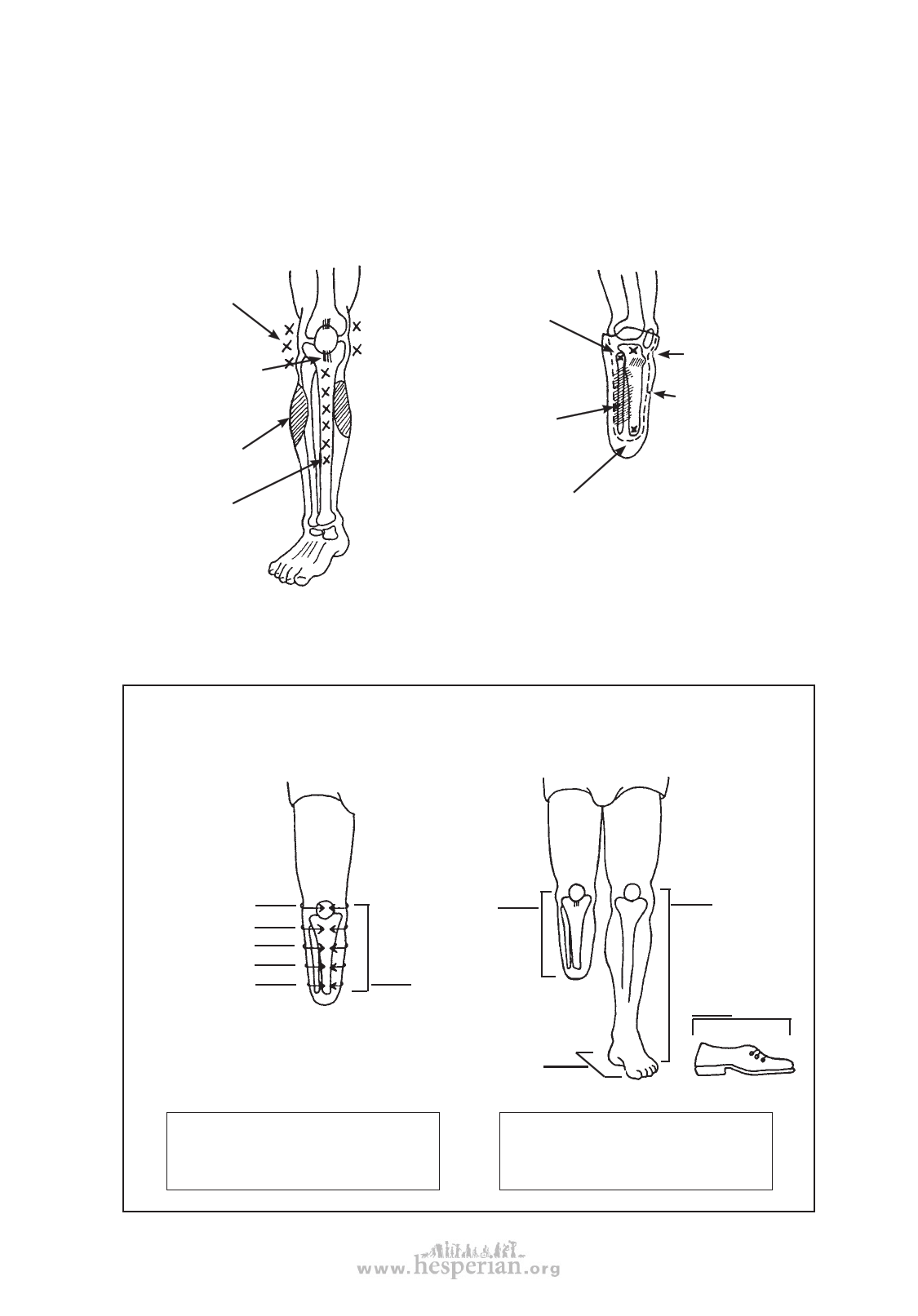
ARTIFICIAL LEGS
Before starting to make an artificial limb, STUDY THE PERSON’S LEG.
627
A good fit of the socket on the stump and at the knee is one of the most important
—and difficult—parts of limb making. It helps to have an understanding of the bones and
muscles in the leg
Avoid pressure
on bony bumps.
FRONT VIEW
Put pressure
on kneecap tendon.
Put pressure
on muscle areas.
Avoid pressure
on shin bone.
A GOOD SOCKET,
• does not press
on bony bumps
just under
the skin.
SIDE VIEW
• presses in firmly
just below the
kneecap. (The
main weight
bearing is here.)
• presses
against muscles.
• does not press
over shin bone.
• leaves enough space at stump tip so that
tip will not be injured if the stump
settles a little deeper into the socket.
Before beginning, study the person’s knee and stump carefully. Note the positions
of the kneecap, the bony bumps on the sides of the knee, and the shin bone.
MEASUREMENTS YOU MAY NEED FOR A BELOW-KNEE LIMB
(Copy this chart and use it to record your measurements.)
distance around
knee just below
kneecap and
every 5 cm.
around the
stump
length from
mid-knee to
end of stump
length from
mid-knee to
bone end
length of foot
length from
mid-knee to
heel of
good leg
shoe size
Note: For the plaster and
bamboo limb, only lengthwise
measurements are needed.
Note: The artificial limb should
be the same length or just a
little shorter than the other leg.
disabled village children